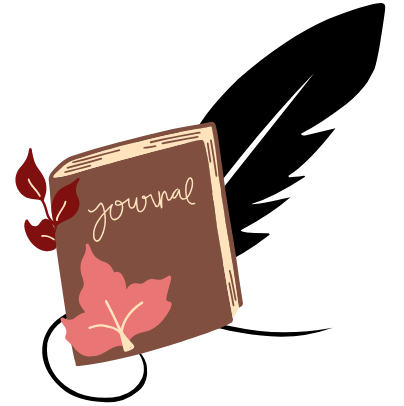As a writer, I’ve discovered that creativity flourishes through consistent practice and exploration. These ten writing exercises will help you produce your imagination, refine your skills, and develop your unique voice.
Whether you’re a seasoned author or just starting out, incorporating these exercises into your routine can lead to significant improvements in your craft.
The Importance of Daily Writing Practice
Consistent writing practice is essential for growth as a writer. Setting aside time each day to engage in writing exercises trains your mind, improves your skills, and builds confidence.
Even on days when inspiration seems elusive, showing up and putting words on the page is what separates aspiring writers from accomplished ones.
1. The Five-Minute Freewrite
The five-minute freewrite is a powerful tool for bypassing your inner critic and tapping into your subconscious creativity. Here’s how to do it:
- Set a timer for five minutes.
- Choose a random word or phrase as a prompt.
- Write continuously without stopping.
- Don’t worry about grammar, punctuation, or making sense.
The goal is to let your thoughts flow freely onto the page without judgment. This exercise can help you overcome writer’s block, generate new ideas, and warm up your writing muscles before diving into more structured work.
I often start my writing sessions with a freewrite, and I’m frequently surprised by the unexpected ideas and connections that emerge. Sometimes, what begins as nonsensical rambling evolves into the seed of a compelling story or essay.
2. Character Snapshot
Creating vivid, memorable characters is crucial for engaging storytelling. The character snapshot exercise challenges you to bring a character to life in just 100 words.
Focus on unique details that make the character stand out:
- What’s their most striking physical feature?
- What’s the one thing they can’t leave home without?
- What’s their most unusual habit or quirk?
This exercise hones your ability to create distinct characters quickly and efficiently. It’s particularly useful for developing supporting characters or populating your stories with interesting background figures.
When I practice character snapshots, I often find myself creating people I want to know more about. These brief sketches frequently evolve into fully-fledged characters in my longer works.
3. Dialogue Ping-Pong
Becoming Better at the art of dialogue is essential for creating engaging narratives. The dialogue ping-pong exercise challenges you to write a conversation between two characters using only dialogue—no tags, no description.
Alternate between speakers, making each line reveal something about the character or advance the plot.
This exercise sharpens your ear for natural-sounding dialogue and teaches you to convey information through speech alone. It’s an excellent way to practice:
- Giving each character a distinct voice
- Revealing character traits through speech patterns
- Moving the plot forward through conversation
When I practice dialogue ping-pong, I focus on creating tension and subtext. It’s fascinating to see how much can be communicated between the lines when you’re limited to pure dialogue.
4. Sensory Overload
Engaging descriptions involve more than just visual details. The sensory overload exercise challenges you to describe an ordinary object using all five senses.
Choose an everyday item and explore:
- How it looks
- How it feels to the touch
- What it smells like
- What sounds it makes (or doesn’t make)
- What it might taste like (even if you wouldn’t actually taste it)
This exercise trains you to create rich, immersive descriptions that engage readers on many levels. It’s particularly useful for bringing settings to life or making mundane objects feel extraordinary.
I’ve found that this exercise often leads me to unexpected metaphors and similes. By exploring an object through all five senses, I find out about new ways to describe familiar things.
5. Genre Mashup
The genre mashup exercise stretches your creative muscles by challenging you to combine elements from two contrasting genres. For example, you might blend:
- Romance and horror
- Science fiction and western
- Mystery and comedy
Write a short scene that incorporates key elements from both genres. This exercise can lead to unique story ideas and help you break out of genre conventions.
When I practice genre mashups, I often find out about new angles on familiar tropes. It’s a great way to inject freshness into your writing and explore unconventional narrative possibilities.
6. The Six-Word Story
Inspired by Ernest Hemingway’s famous six-word story (“For sale: baby shoes, never worn.”), this exercise challenges you to tell a finish story in just six words. This extreme brevity forces you to focus on the essence of your narrative and make every word count.
The six-word story exercise teaches:
- Concision
- The power of implication
- How to create emotional impact with minimal text
I find that practicing six-word stories sharpens my ability to write compelling headlines and opening lines. It’s a powerful reminder that sometimes less truly is more.
7. Reverse Chronology
Writing a story backwards, starting with the ending and working your way to the beginning, offers a unique perspective on narrative structure. This exercise helps you understand cause and effect in storytelling and may inspire new plot twists.
To practice reverse chronology:
- Write a brief ending scene
- Ask yourself, “What happened immediately before this?”
- Continue working backwards, scene by scene
- Pay attention to how each scene leads to the next
This exercise often reveals new insights about character motivations and plot development. I’ve found that it’s particularly useful for untangling complex storylines or finding fresh approaches to familiar narratives.
8. The Metaphor Game
Metaphors and similes are powerful tools for expressing abstract concepts in concrete terms. The metaphor game challenges you to describe an emotion using only metaphors and similes.
For example:
- “Anxiety is a ticking bomb in your pocket.”
- “Happiness is sunshine breaking through storm clouds.”
This exercise enhances your use of figurative language and helps you express complex emotions in vivid, relatable ways. It’s particularly useful for poetry and descriptive prose.
When I practice the metaphor game, I often find out about new ways to convey emotional experiences. It’s a great tool for avoiding clichés and finding fresh perspectives on familiar feelings.
9. Letter to Your Future Self
Writing a letter to your future self is both a writing exercise and a form of goal-setting. Imagine yourself ten years in the future and write a letter addressing:
- What you hope to have accomplished
- Advice you’d give to your future self
- Reflections on your current life and aspirations
This exercise improves your writing skills while also helping clarify your goals and aspirations. It’s a powerful tool for self-reflection and personal growth.
I revisit letters I’ve written to my future self periodically, and it’s always an enlightening experience. It’s fascinating to see how my goals and perspectives have evolved over time.
10. The Rewrite Challenge
Taking a familiar story and rewriting it from a different perspective is an excellent way to develop your storytelling skills. Choose a well-known tale (a fairy tale, myth, or even a news article) and retell it from:
- A minor character’s point of view
- The perspective of an inanimate object in the story
- A completely different cultural or historical context
This exercise develops your ability to see stories from many angles and can lead to fresh, innovative narratives. It’s particularly useful for understanding character motivation and exploring themes from new perspectives.
When I practice the rewrite challenge, I often find out about new depths in familiar stories. It’s a reminder that there’s always another side to every tale.
Implementing These Exercises
To get the most out of these exercises, incorporate them into your daily routine. Start with just 15-20 minutes a day.
You might focus on one exercise per week or mix them up depending on your mood and writing goals.
Remember, consistency is key. Even on days when you don’t feel inspired, showing up and doing the work is what matters most.
These exercises are tools to help you grow as a writer, not tests to pass or fail.
Overcoming Common Challenges
Writer’s block is a common hurdle, but these exercises can help you push through. If you’re feeling stuck, try switching to a different exercise or combining two of them for an extra challenge.
Self-doubt is another frequent obstacle for writers. Remember that these exercises are for practice, not perfection.
Give yourself permission to write badly—it’s often the first step to writing well.
The goal is progress, not flawless execution.
Adapting Exercises for Different Projects
While these exercises are great for general skill-building, you can also tailor them to your specific writing projects. For example:
- If you’re working on a novel, use the character snapshot exercise to flesh out your supporting cast.
- Use dialogue ping-pong to practice conversations between your main characters.
- Apply the sensory overload exercise to key settings in your story.
Be creative in how you apply these exercises to your current work. The goal is to keep challenging yourself and expanding your writing toolkit.
Building on the Basics
As you become more comfortable with these exercises, don’t be afraid to change them or create your own. The goal is to keep challenging yourself and expanding your writing toolkit.
You might:
- Combine two exercises for an added challenge
- Increase or decrease time limits to suit your needs
- Adapt exercises to focus on specific aspects of your writing you want to improve
The key is to keep pushing yourself and exploring new ways to develop your craft.
Practice Makes Progress
To reinforce your learning, choose one exercise and commit to doing it every day for a week. At the end of the week, review your work.
You’ll likely see improvement not just in the specific skill that exercise targets, but in your overall writing as well.
Keep a journal of your experiences with these exercises. Note which ones you find most challenging, which are most enjoyable, and which lead to the most surprising discoveries.
This reflection can help you tailor your practice to your specific needs and goals as a writer.
Frequently Asked Questions
How long should I spend on writing exercises each day?
Start with 15-20 minutes daily. Consistency is more important than duration.
As you build the habit, you can gradually increase the time if desired.
Can these exercises help with writer’s block?
Yes, these exercises can be effective tools for overcoming writer’s block by providing structure and prompts to get your creativity flowing.
Are these exercises suitable for all types of writing?
While originally designed for creative writing, many of these exercises can be adapted for various forms of writing, including non-fiction, journalism, and academic writing.
How often should I switch between different exercises?
There’s no fixed rule. Some writers prefer to focus on one exercise per week, while others mix them up daily.
Experiment to find what works best for you.
Can I use these exercises if I’m a finish beginner?
Absolutely. These exercises are designed to be accessible for writers at all levels, from beginners to experienced authors.
How do I know if I’m improving through these exercises?
Keep dated samples of your work and review them periodically. You’ll likely notice improvements in areas like description, dialogue, and character development over time.
Can these exercises replace formal writing education?
While these exercises are valuable tools for improvement, they work best as a supplement to, not a replacement for, comprehensive writing education.
How can I stay motivated to do these exercises regularly?
Set achievable goals, track your progress, and reward yourself for consistency. Joining a writing group or finding an accountability partner can also help maintain motivation.
Can I share or publish the writing I produce from these exercises?
Generally, yes. However, if you’re using prompts or materials provided by others, check for any copyright restrictions before publishing.
How do these exercises relate to developing a personal writing style?
Regular practice with these diverse exercises can help you find out about and refine your unique voice and preferred writing techniques.
Key Takeaways
- Consistent practice is crucial for improving your writing skills.
- Variety in exercises helps develop different aspects of your craft.
- Focus on progress and exploration rather than perfection.
- Adapt exercises to suit your specific writing projects and goals.
- Every word you write is a step towards becoming a better writer.




